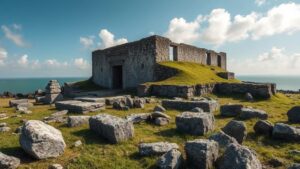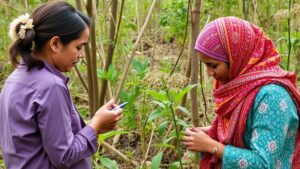Mapping the “Sanctuary of Eternal Bloom,†a hidden garden said to never wither.
Mapping the “Sanctuary of Eternal Bloomâ€
Hidden away from the prying eyes of the modern world, the “Sanctuary of Eternal Bloom†has captured the imagination of adventurers and botanists alike. This mythical garden is rumored to be a place where the flora never withers, perpetually vibrant and full of life. But what is the truth behind this enchanted location? In this article, we will explore its history, alleged locations, the flora that thrives there, and the efforts being made to uncover its mysteries.
Historical Context and Origins
The concept of gardens that bloom eternally can be traced back to various cultures, with some echoing through ancient texts. For example, the legend of the “Garden of Hesperides†from Greek mythology tells of a paradise filled with golden apples, tended by nymphs and offering eternal youth. Similarly, ancient Chinese texts reference mythical gardens where time stands still.
In the late 19th century, botanists like Francis P. Smith proposed the existence of such gardens based on findings of plants with unique adaptive traits. Notably, the “Sanctuary of Eternal Bloom†is often said to be located in the remote mountains of Bhutan, specifically around the region of the Paro Valley. The mystical aura of Bhutan, often referred to as the “Land of the Thunder Dragon,†adds to the allure of the sanctuary.
Mapping the Sanctuary: Alleged Locations
Several key locations have been proposed as possible sites of this elusive sanctuary, but the most credible ones include:
- Paro Valley, Bhutan: Surrounded by cliffs and lush greenery, Paro Valley is not only rich in biodiversity but also holds numerous sacred sites that tie back to the myth of eternal bloom.
- Ujung Kulon National Park, Indonesia: Located on the southwestern tip of Java, this area is home to pristine rainforests, and some explorers believe its dense flora may house secrets to immortality.
Researchers often rely on local folklore, combined with satellite imaging technology, to drive explorations into these regions. The National Geographic Society has recently funded expeditions to these areas, seeking to bridge myth and botany with modern science.
Flora of the Eternal Bloom
One of the most captivating aspects of the “Sanctuary of Eternal Bloom†is the unique plant life that allegedly flourishes within it. Some species purportedly found there include:
- Himalayan Blue Poppy: This captivating flower is renowned for its stunning color and its ability to thrive in harsh climatic conditions, providing a clue to the adaptability of the flora.
- Wolffia Arrhiza: Known as watermeal, this aquatic plant is noted for its resilience and ability to reproduce vegetatively, leading botanists to speculate about the regenerative properties of plants in the sanctuary.
While many of these plants can be found in various regions of the world, their congregation in one “eternal†location presents a compelling narrative about biodiversity and the possibility of discovering unique adaptations.
Scientific Investigations and Future Endeavors
With the increasing interest in the “Sanctuary of Eternal Bloom,†various scientific communities are now dedicating resources to conduct in-depth studies. For example:
- The Bhutan Biodiversity Project aims to catalog plant species found within the Paro Valley, hoping to identify unique genetic materials that could yield medicinal properties.
- Environmental DNA (eDNA) sampling has been adopted as a method to identify species present in unexplored habitats, potentially leading to the discovery of previously unknown flora.
Also, these scientific pursuits are coupled with conservation efforts to protect the ecosystems where these mythical plants are believed to exist. Ensuring that these delicate environments are preserved is crucial, as they may hold keys to sustainable living practices and medical breakthroughs.
Potential Questions and Concerns
As interest in the “Sanctuary of Eternal Bloom†grows, several questions arise:
- Is the sanctuary real or just a myth? While definitive evidence remains scarce, the intersection of folklore and environmental scientific study suggests that the sanctuary serves as an inspiration for exploration.
- What are the risks associated with searching for the sanctuary? Adventurers and researchers may face treacherous conditions and legal restrictions in protected areas. Responsible tourism practices are necessary to maintain ecological balance.
Actionable Takeaways
For those intrigued by the idea of the “Sanctuary of Eternal Bloom,†consider the following actions:
- Research local botanical gardens or park projects aiming to preserve rare species in your area.
- Participate in conservation efforts that protect biodiversity and promote sustainable practices.
- Engage with local folklore and history to appreciate the cultural significance behind such myths.
The allure of the “Sanctuary of Eternal Bloom†is a testament to humanitys profound connection with nature and the mysteries it holds. While the garden may remain elusive, our desire to protect and understand our natural world continues to flourish, much like the eternal blooms it represents.



